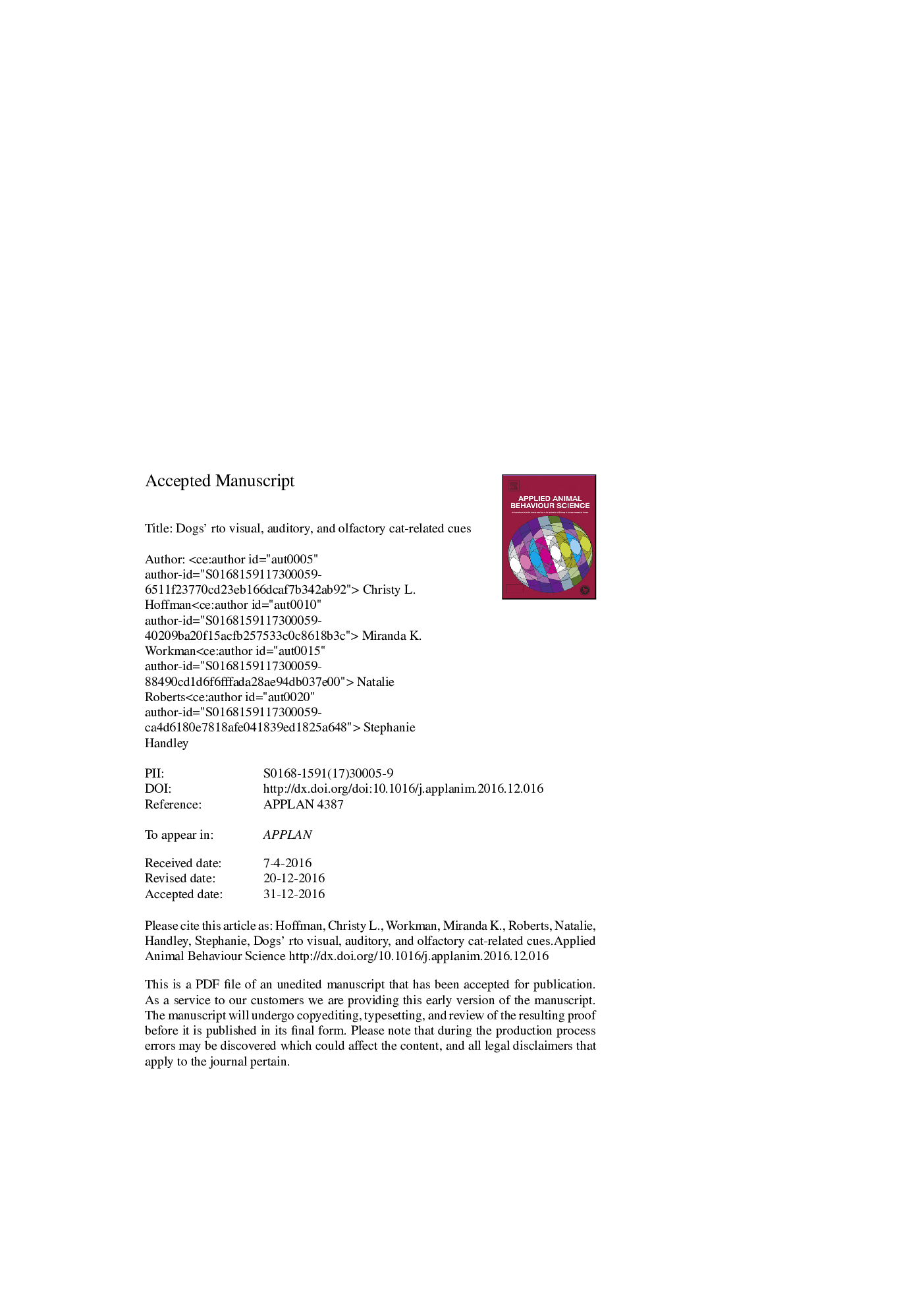| Article ID | Journal | Published Year | Pages | File Type |
|---|---|---|---|---|
| 5763338 | Applied Animal Behaviour Science | 2017 | 31 Pages |
Abstract
Standardized assessments have been developed to assess dogs' behaviors around other dogs, but there currently is no validated way to predict how a dog in an animal shelter will behave around cats, unless the dog's previous history is known. This study explored dogs' responses to visual, auditory, and olfactory cat-related and control stimuli, and tested whether dogs known to interact safely with cats and other small animals responded differently to the stimuli than dogs known to have injured or killed such animals. We video recorded 69 dogs' responses to the stimuli, and raters who were blind to the dogs' behavioral histories coded the dogs' reactions. Dogs differed in the amount of time they spent orienting to the cat and control visual stimuli and sounds. They spent significantly more time orienting to the cat sound than to the visual cat stimulus, to the visual cat stimulus than to the visual control stimulus, and to the control sound than to the visual control stimulus (for all, p < 0.01). Dogs that were presented with the visual stimuli in conjunction with the cat odor (i.e., cat urine) sniffed the visual control stimulus more than cats in the non-olfactory condition (p = 0.04), but they did not sniff the visual cat stimulus more. Dogs that had killed or injured a cat or other small animal spent more time orienting to the cat sound than dogs that did not have this history (p = 0.01). The results indicate that dogs are more responsive to auditory than visual or olfactory cat-related stimuli, and that it may be possible to use cat sounds to predict which shelter dogs are likely to fare well in homes with cats or other small animals.
Related Topics
Life Sciences
Agricultural and Biological Sciences
Animal Science and Zoology
Authors
Christy L. Hoffman, Miranda K. Workman, Natalie Roberts, Stephanie Handley,
